What Will Grow in a Shady Garden (and How to Care For It)
Feeling challenged by a shady spot? Be inspired, instead, by these tips to help your plot flourish
Some plants prefer lots of sun, some prefer a little cool shade. One of the most challenging areas to plant in a garden is in shade, but with a little know-how you can do so beautifully. This can be the shade cast by a north-facing wall, where little light or rain can reach, or a shady area under trees, which compete not only from above, taking the light, but also compete for nutrients and water at ground level through their roots. In both cases, the area is most likely to be dry, and this combination of dryness and lack of light can prove challenging for gardeners. However, many beautiful plants grow best in shade and if your garden was entirely in sun, one would be compelled to create some shade to accommodate them.
Show some stems
A plant that thrives in woodland is bamboo. The stems of bamboo are particularly beautiful. Polished by Mother Nature to a high shine, they come in different colours – from ebony to orange, yellow and green.
Be careful to choose a bamboo that will not spread, or use a root barrier to keep it in the area in which you want it.
Here, Semiarundinaria fastuosa has been pruned up to show off its lovely green stems and underplanted with the wonderfully tough sedge Carex ‘Everest’ in a challenging garden with almost complete canopy cover.
A plant that thrives in woodland is bamboo. The stems of bamboo are particularly beautiful. Polished by Mother Nature to a high shine, they come in different colours – from ebony to orange, yellow and green.
Be careful to choose a bamboo that will not spread, or use a root barrier to keep it in the area in which you want it.
Here, Semiarundinaria fastuosa has been pruned up to show off its lovely green stems and underplanted with the wonderfully tough sedge Carex ‘Everest’ in a challenging garden with almost complete canopy cover.
Be box clever
Box, or Buxus sempervirens, is another plant that grows naturally in woodland, so it will grow happily in the shady corner of your garden as an informal ground cover or clipped into shapes to contrast with other textures, as seen here where the neatly clipped box balls contrast beautifully with the tree fern Dicksonia antarctica.
Box has the added bonus of being evergreen and its foliage is sweetly scented.
Box, or Buxus sempervirens, is another plant that grows naturally in woodland, so it will grow happily in the shady corner of your garden as an informal ground cover or clipped into shapes to contrast with other textures, as seen here where the neatly clipped box balls contrast beautifully with the tree fern Dicksonia antarctica.
Box has the added bonus of being evergreen and its foliage is sweetly scented.
Create a fernery
There is a vast variety of ferns, all interesting and uniquely different. No wonder the Victorians loved them so much. Most ferns love a shady woodland environment and once established will provide a lush and natural understorey to your space. Combine them with some woodland shrubs, such as holly, magnolia or, if your soil is acidic, azalea and rhododendron to create interesting layers and, of course, underplant with bulbs.
Room Tour: A light-filled extension surrounded by luscious ferns
There is a vast variety of ferns, all interesting and uniquely different. No wonder the Victorians loved them so much. Most ferns love a shady woodland environment and once established will provide a lush and natural understorey to your space. Combine them with some woodland shrubs, such as holly, magnolia or, if your soil is acidic, azalea and rhododendron to create interesting layers and, of course, underplant with bulbs.
Room Tour: A light-filled extension surrounded by luscious ferns
Look at the detail
If you have a small shady garden all the little details are important as you will see them close up. You can create a lot of interest by layering up shady plants like a mini woodland. Here Lily of the Valley (Convallaria majalis) is layered beneath maidenhair fern (Adiantum pedatum). The subtle variegations of Hosta ‘Frances Williams’ form a strong textural background and contrast to the finer foliage of the other plants. All of these plants will thrive in shade once established.
If you have a small shady garden all the little details are important as you will see them close up. You can create a lot of interest by layering up shady plants like a mini woodland. Here Lily of the Valley (Convallaria majalis) is layered beneath maidenhair fern (Adiantum pedatum). The subtle variegations of Hosta ‘Frances Williams’ form a strong textural background and contrast to the finer foliage of the other plants. All of these plants will thrive in shade once established.
Plant lots of bulbs
Spring bulbs are woodland plants that evolved to take advantage of the period in spring when growth has started but the leaves are not yet on the trees. With this in mind, a woodland garden can have colour from the moment the first snowdrop or crocus appears to the last narcissus, especially combined with hellebore, brunnera, tiarella and other woodland perennials. Here, Narcissus ‘Actaea’ (in the foreground) and Muscari armeniacum (the deep violet-blue flower) have popped up from under the cover of an excellent shade-tolerant plant – Tiarella cordifolia ‘Spring Symphony’, a semi-evergreen woodland plant.
Spring bulbs are woodland plants that evolved to take advantage of the period in spring when growth has started but the leaves are not yet on the trees. With this in mind, a woodland garden can have colour from the moment the first snowdrop or crocus appears to the last narcissus, especially combined with hellebore, brunnera, tiarella and other woodland perennials. Here, Narcissus ‘Actaea’ (in the foreground) and Muscari armeniacum (the deep violet-blue flower) have popped up from under the cover of an excellent shade-tolerant plant – Tiarella cordifolia ‘Spring Symphony’, a semi-evergreen woodland plant.
Catch some rays
Even in the shadiest gardens a little light will fall through the tree canopy. If you can position feature plants to avail of this, you’ll have a showstopper. Here, the translucent leaves of the fern Dryopteris wallichiana reflect the light falling through the trees, with the lower planting beneath it acting as a backdrop or foil.
Even in the shadiest gardens a little light will fall through the tree canopy. If you can position feature plants to avail of this, you’ll have a showstopper. Here, the translucent leaves of the fern Dryopteris wallichiana reflect the light falling through the trees, with the lower planting beneath it acting as a backdrop or foil.
Opt for containers
A shady space with no room to plant can still be interesting if you plant up some interesting containers. These ones are a rough concrete finish and are filled with shade-loving plants. Ferns have wonderful textures and when they start to unfurl in the spring they are particularly beautiful. Here you can really appreciate them up close, combined with another wonderful spring-flowering woodland plant: the hellebore. Lovely soft mosses around the edges complete the picture – a shady garden in miniature.
How to introduce a water feature into your garden
A shady space with no room to plant can still be interesting if you plant up some interesting containers. These ones are a rough concrete finish and are filled with shade-loving plants. Ferns have wonderful textures and when they start to unfurl in the spring they are particularly beautiful. Here you can really appreciate them up close, combined with another wonderful spring-flowering woodland plant: the hellebore. Lovely soft mosses around the edges complete the picture – a shady garden in miniature.
How to introduce a water feature into your garden
Grow colours that glow
Bright colours, such as reds, yellows and oranges, all shine out in a sunny situation but tend to look dull in shade. Colours that work well and reflect the limited light under trees are whites, pale pinks and blues. As foliage beneath trees tends to be lush and green to capture the maximum amount of light, the whites and pale shades stand out even more against the green.
Whites good to try in this situation are the many varieties of hydrangea suitable for shade, including Hydrangea ‘Mme E. Mouilliere’, Hydrangea arborescens ‘Annabelle’ and the paniculata hybrids. Hybrid anemones also come in cool white. Try Anemone ‘Honorine Jobert’ or Anemone ‘Whirlwind’.
Bright colours, such as reds, yellows and oranges, all shine out in a sunny situation but tend to look dull in shade. Colours that work well and reflect the limited light under trees are whites, pale pinks and blues. As foliage beneath trees tends to be lush and green to capture the maximum amount of light, the whites and pale shades stand out even more against the green.
Whites good to try in this situation are the many varieties of hydrangea suitable for shade, including Hydrangea ‘Mme E. Mouilliere’, Hydrangea arborescens ‘Annabelle’ and the paniculata hybrids. Hybrid anemones also come in cool white. Try Anemone ‘Honorine Jobert’ or Anemone ‘Whirlwind’.
Sow some seed
Plants from seeds are true survivors. They establish more quickly and find just the right niche. Foxgloves are excellent woodland plants which are biennials – that is they produce foliage year one and flowers the following year. They grow easily from seed and once you have some established they will self seed around, popping up where you least expect them. Other good self seeders are aquilegia, hellebore and scented sweet rocket. Some bulbs, once established, will also spread by seed.
What have been your experiences of growing in gardens with lots of shade? Share your tips in the Comments section!
Plants from seeds are true survivors. They establish more quickly and find just the right niche. Foxgloves are excellent woodland plants which are biennials – that is they produce foliage year one and flowers the following year. They grow easily from seed and once you have some established they will self seed around, popping up where you least expect them. Other good self seeders are aquilegia, hellebore and scented sweet rocket. Some bulbs, once established, will also spread by seed.
What have been your experiences of growing in gardens with lots of shade? Share your tips in the Comments section!




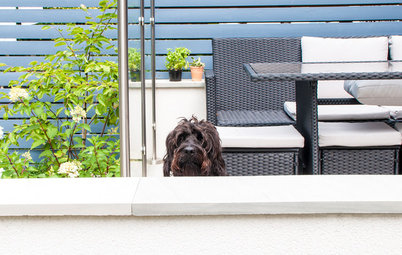
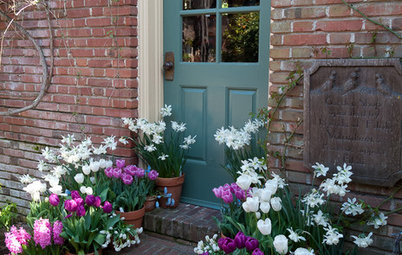
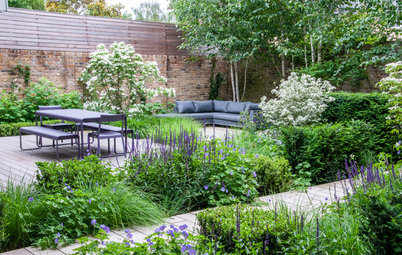
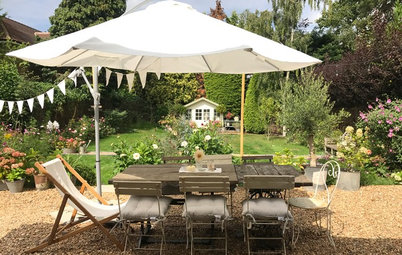
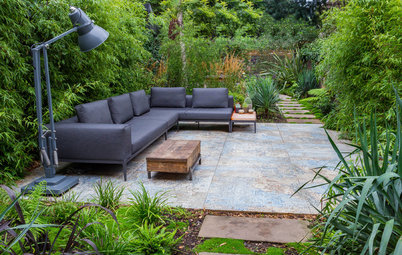
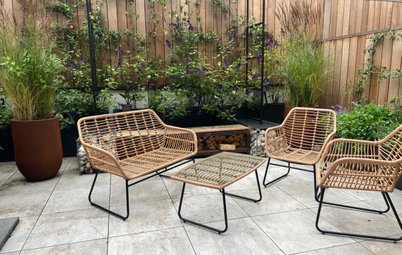
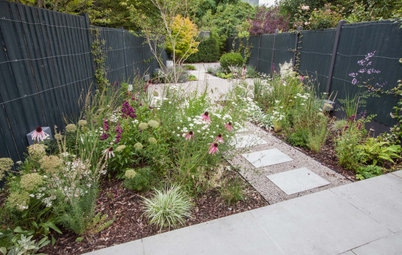
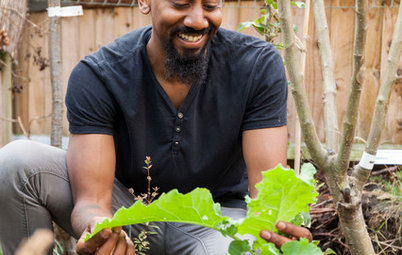
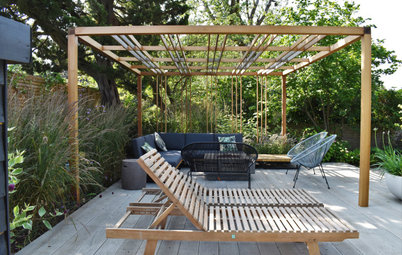
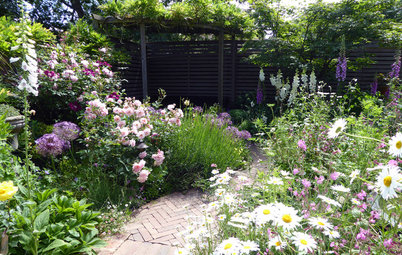
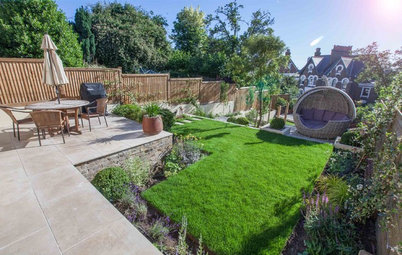
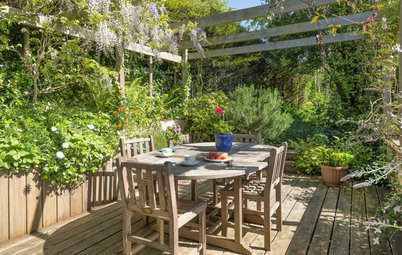

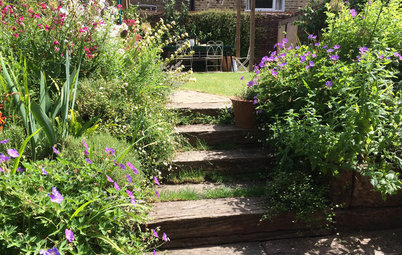
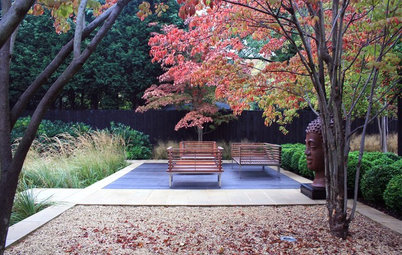

Where there are trees there is not only shade, but also hungry roots which suck out any moisture and nutrients from the soil. In order to plant such a challenging area you need to first add a thick mulch of organic matter. This could be leaf mould, well-rotted farmyard manure or composted vegetation. Not only will this help to sustain your new plantings, it will also retain moisture, which is essential in getting plants established.
A late autumn planting is best after the leaves have come off the trees and there is more light and moisture reaching the plants from above. Purchase small plants as these will establish more quickly. Keep them well-watered for the first year or possibly two, as it is only when they have sufficient roots themselves that the plants can seek out sufficient moisture to sustain them.